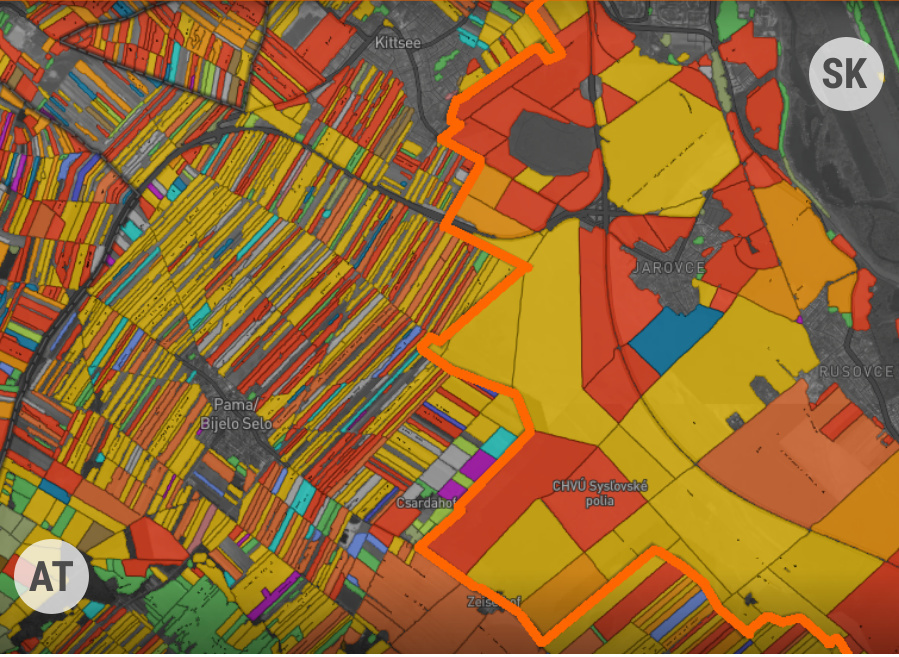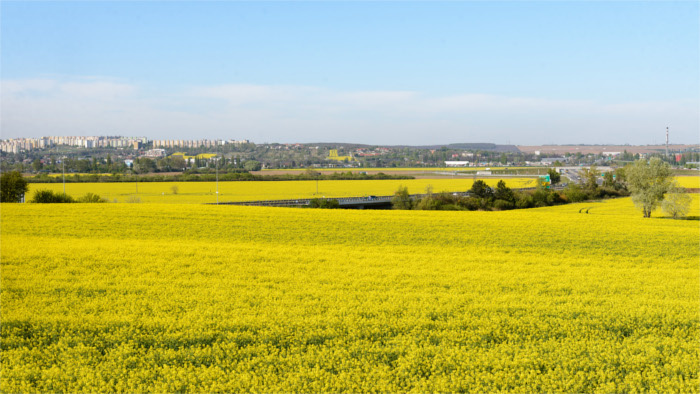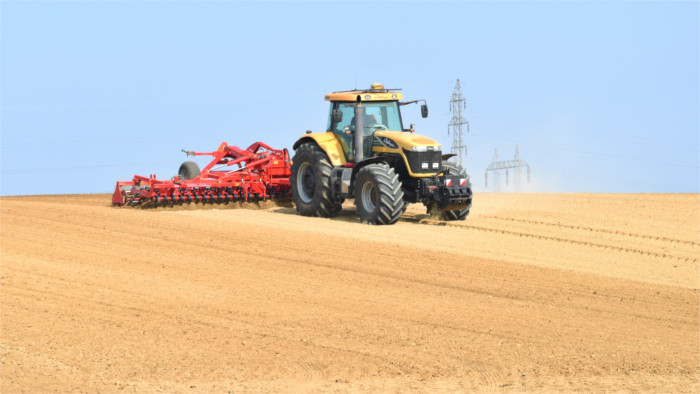"According to satellite images, the average size of monoculture fields in Slovakia is 12 hectares, which means that Slovakia has the largest fields of all EU countries," says a recently published analysis conducted by the Institute for the environmental policy. In comparison, the European average is only 3,9 hectares.
 Fields at Austrian-Slovak borders, 2018. Source: OneSoil
Fields at Austrian-Slovak borders, 2018. Source: OneSoil
As reported by researchers, large areas of monoculture fields have a negative impact on the environment in the agricultural landscape and they often lack hedgerows, windbreaks and flower strips that would provide biodiversity and, importantly, would help to retain water in the land.
Monocultures
Máte problém s prehrávaním? Nahláste nám chybu v prehrávači.
Recently, a strong wave of debates has emerged in Slovakia addressing one of the most widespread monoculture crops - rapeseed.
 Rapeseed fields in Nitra region, Slovakia. Source: TASR
Rapeseed fields in Nitra region, Slovakia. Source: TASR
However, controversy around rapeseed cultivation is not a new thing in Slovakia. Enormous colza fields were publically discussed already in 2019. This year's debates were initiated by Slovak MEP Martin Hojsík.
Rapeseed
Máte problém s prehrávaním? Nahláste nám chybu v prehrávači.
As stated in the Green Report 2019, the total area of arable land in Slovakia is approximately 1.35 million hectares. In the 2020/2021 growing season, rapeseed is cultivated on an area of 142 thousand hectares, which represents around 10.5 % of the total area of arable land. The biggest rapeseed field, in Nitra region, Slovakia, is 432 hectares in size.

